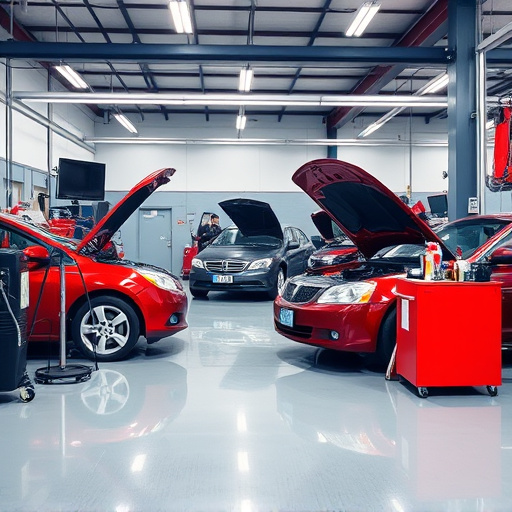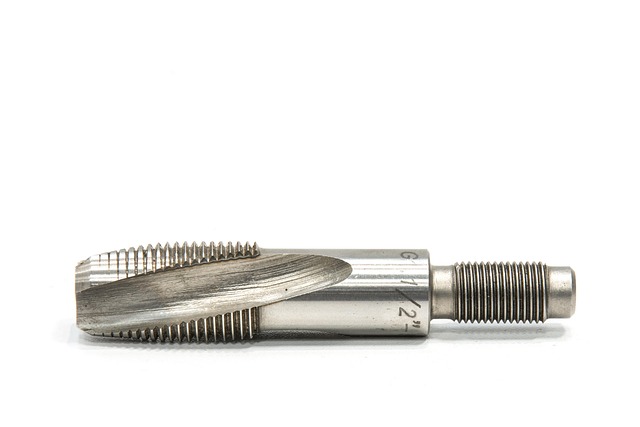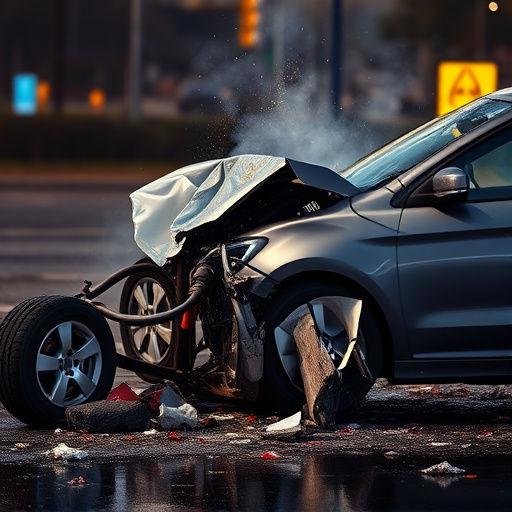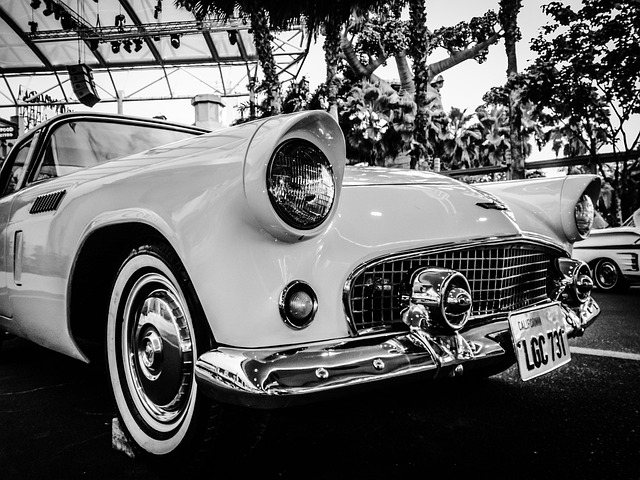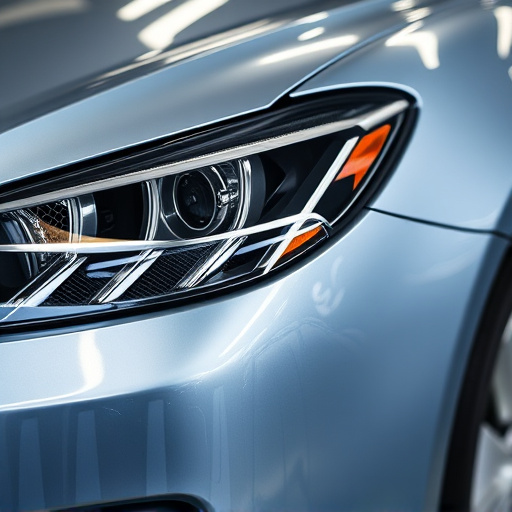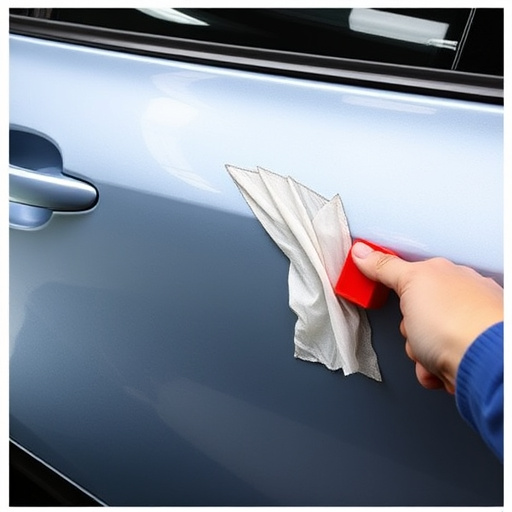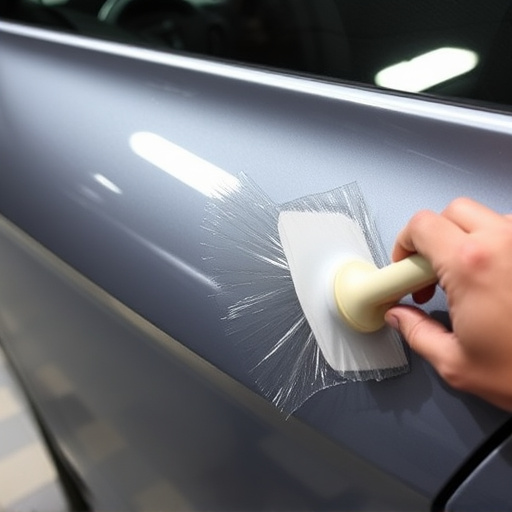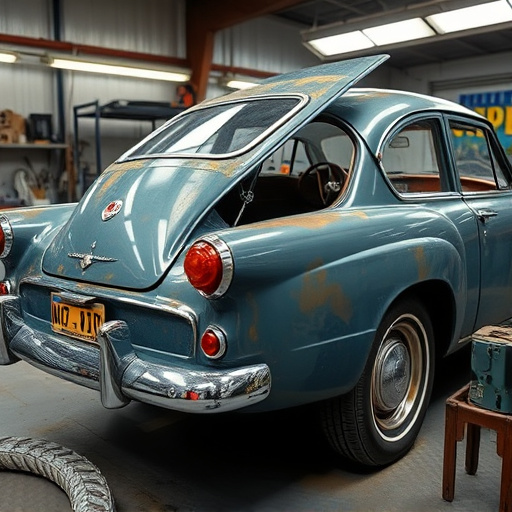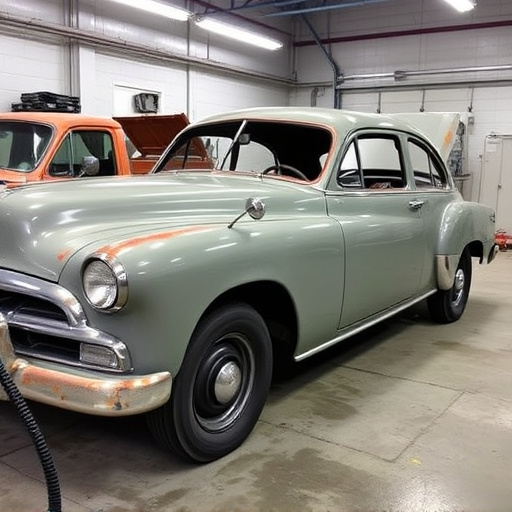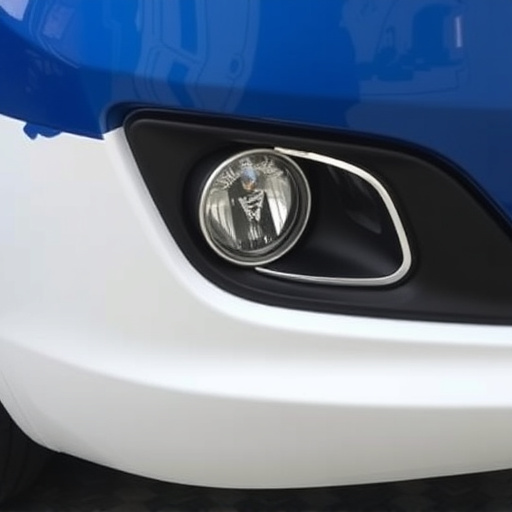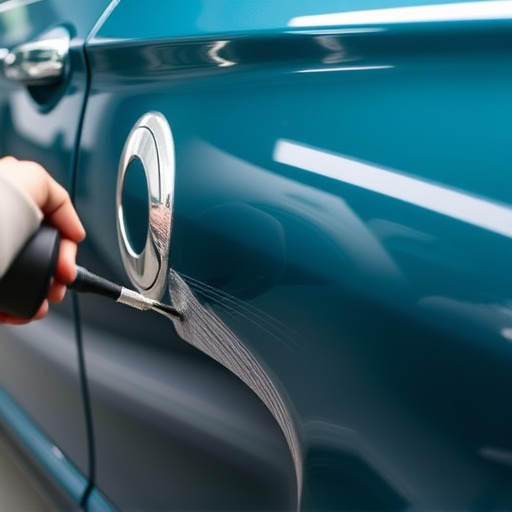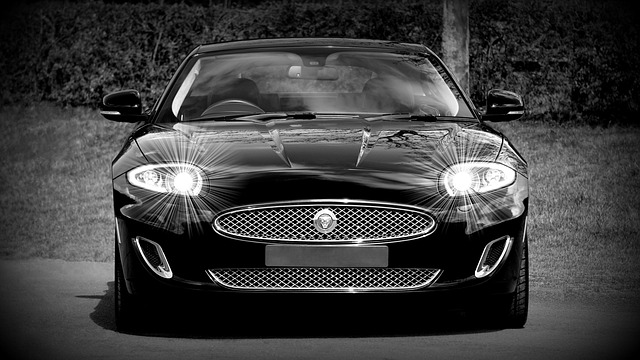Auto body collision repair is a complex process ensuring structural integrity and safety of vehicles post-accident. Skilled technicians assess, disassemble, replace, weld, paint, and refinish parts, strengthening underlying structures to meet standards. This meticulous approach applies to luxury and standard vehicles alike, addressing frame realignment, replacement parts, crumple zone assessment, and restoration of critical safety features for optimal passenger protection and roadworthiness.
Auto body collision repair is more than just fixing dents; it’s about restoring vehicle safety and structural integrity. When a crash occurs, the intricate processes involved in auto body collision repair ensure that every component—from frame to safety features—is meticulously assessed and rectified. This comprehensive approach guarantees not only aesthetic restoration but also the preservation of critical performance and safety standards. By understanding these processes, we can appreciate how skilled technicians transform damaged vehicles into safe, reliable modes of transportation.
- Understanding Auto Body Collision Repair Processes
- Ensuring Structural Integrity After a Crash
- Restoring Safety Features and Performance Reliability
Understanding Auto Body Collision Repair Processes

The process of auto body collision repair is a meticulous art that transforms damaged vehicles into safe and drivable condition again. It involves several critical steps designed to ensure both structural integrity and safety for future journeys. When a vehicle experiences a collision, the impact can cause various issues, from bent frames and crushed panels to compromised suspension systems. Skilled technicians assess these damages, using advanced diagnostic tools and their expertise to pinpoint exact repairs needed.
This repair process begins with careful disassembly of affected components, allowing access to internal structures that may have been impacted during the collision. Each damaged part is then expertly inspected, measured, and compared against original specifications. Once identified, replacement parts—from body panels to mechanical components—are either fabricated, ordered, or sourced from manufacturers. Through a combination of welding, painting, and refinishing, the vehicle’s exterior and interior are restored to their pre-collision condition, while underlying structural elements are strengthened to meet safety standards.
Ensuring Structural Integrity After a Crash

After a collision, ensuring the structural integrity of a vehicle is paramount to its safety and that of its occupants. Auto body collision repair professionals are trained to meticulously assess every component of the car’s frame, identifying potential weaknesses or damage that could compromise its strength. They use specialized equipment and techniques to realign and reinforce the frame, ensuring it maintains its original shape and structural soundness. This meticulous process not only guarantees the vehicle’s stability during future driving but also plays a crucial role in preventing further injuries in case of another accident.
The art of auto body collision repair extends beyond simply fixing dents or scratches; it involves restoring the overall integrity of the car’s structure, particularly in complex cases where components may be displaced or damaged beyond initial appearances. Skilled technicians employ advanced tools and methods to address hidden issues, ensuring that every part of the vehicle is in optimal condition before it hits the road again. This comprehensive approach to car body repair, including luxury vehicle repair, is vital for maintaining both safety standards and the overall quality of the vehicle post-crash.
Restoring Safety Features and Performance Reliability

After an auto body collision, it’s not just about making a car look good; it’s about ensuring its safety features and overall performance are fully restored. Auto body collision repair goes beyond cosmetic fixes to address structural integrity, which is paramount for passenger protection. Skilled technicians use advanced tools and techniques to realign frames, replace damaged parts, and reassess the vehicle’s crumple zones—all critical components in a car’s ability to protect its occupants during an accident.
The process involves meticulous attention to detail, from inspecting and replacing safety-related components like airbags and seatbelts to repairing or resetting sensors and computer systems that govern advanced driver assistance systems (ADAS). Additionally, auto glass replacement is a crucial step, as intact windows play a vital role in crash safety. Even seemingly minor issues like car scratch repair can impact a vehicle’s overall performance and handling, so they’re not overlooked. By the end of the repair process, the focus is on ensuring the vehicle not only looks like new but also performs reliably and safely on the road.
Auto body collision repair goes beyond mere cosmetic enhancement. By meticulously addressing structural integrity, safety features, and performance reliability, these processes ensure vehicles return to their pre-crash condition, providing both enhanced safety and peace of mind for drivers. Understanding the comprehensive nature of auto body collision repair highlights its importance in restoring not just vehicles, but also the confidence of those who rely on them daily.

